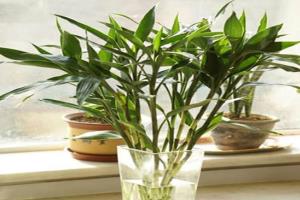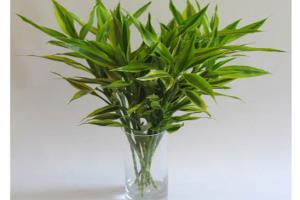How to master eight elements of Anthurium andraeanum to make it bright
Anthurium andraeanum, with bright color and unique flower shape, is loved by the public. therefore, it has become the first choice of home potted flower plants. However, Anthurium andraeanum also has cultivation requirements, and friends who have raised Anthurium andraeanum may know that Anthurium andraeanum does not blossom or cannot survive if it is not properly maintained.

Anthurium andraeanum belongs to the genus Araceae, perennial evergreen herb, it is a typical semi-fleshy whisker root, and has aerial roots. Stem extremely short, nearly stemless. Can blossom all the year round, the general plant grows to a certain period of time, each axilla can produce buds and blossom. In order for Anthurium andraeanum to grow normally and blossom all the year round, it is necessary to master eight elements related to the growth of Anthurium andraeanum.
1. Nutrients
1. Carbohydrate is the most important nutrient for the growth of Anthurium andraeanum, which comes from photosynthesis.
2. Anthurium andraeanum needs more elements in the growth process, including nitrogen, phosphorus, potassium, sulfur, magnesium and calcium, which are mainly obtained from the matrix or artificially added.
3. Trace elements, such as iron, manganese, copper, zinc, molybdenum and boron, are derived from matrix or artificially added.
Second, lighting
Excessive light will inhibit plant growth and cause discoloration or burns of leaves and flowers, which has a great effect on the yield and quality of flowers. On the contrary, when the light intensity is too low, due to the lack of plant assimilation products, it is easy to cause smaller flowers, softer stems and lower yield. The suitable light intensity for Anthurium andraeanum growth is 10000 to 22000 lux.
Third, temperature
The growth of Anthurium andraeanum is sensitive to temperature. The suitable temperature for the growth of Anthurium andraeanum is 14 ℃ to 35 ℃, the optimum temperature is 19 ℃ to 25 ℃, and the temperature difference between day and night is 3 ℃ to 6 ℃, that is, the temperature is 21 ℃ to 25 ℃ in daytime and 19 ℃ at night. Under such temperature conditions, it is beneficial to the absorption and accumulation of nutrients in Anthurium andraeanum and to the growth and flowering of Anthurium andraeanum.
Fourth, humidity
Anthurium andraeanum has relatively high requirements for air humidity. If the humidity is too low, the plant will age, and the leaves and flowers will be smaller; if the humidity is too high, the plant will grow very fragile and the fungus will easily invade. When the temperature is between 20 ℃ and 28 ℃, the humidity should be between 60% and 70%; when the temperature is above 28 ℃, the humidity should be between 70% and 80%. However, in winter, even if the temperature of the greenhouse is higher, it is not suitable to keep too much moisture, because the plant leaves are too wet will reduce its cold protection ability, easy to make frostbite, is not conducive to safe overwintering.
Fifth, watering
Potted Anthurium andraeanum has different water requirements at different growth and development stages. It is not tolerant to drought at the seedling stage, so it should be watered thoroughly at one time, and the substrate should be kept moist often to promote the early emergence of new roots; the plants in the middle and large seedling stage need more water, and the water supply must be sufficient; watering should be reduced appropriately at the flowering stage, and phosphorus and potash fertilizer should be increased to promote flowering. In the process of watering, dry and wet must be carried out alternately, and should not be watered when the plant is seriously short of water.
VI. Matrix
Because Anthurium andraeanum is epiphytic or semi-epiphytic under natural conditions, its aerial root can absorb water from moist air, so the cultivation substrate must be similar to its natural growth substrate, that is, it has better water retention, hydrophobicity and air permeability, otherwise it is easy to cause rotten roots. The commonly used matrix is imported peat. In addition, the sifted coconut bran can be used instead of peat.
V7. Fertilization
Different compound liquid fertilizers were applied according to the growth stages of Anthurium andraeanum, A fertilizer was applied in the growing stage, and B fertilizer and A fertilizer were applied in the flowering stage. Generally, the dry and wet degree of the substrate in the basin can be irrigated once in 2 to 3 days, once in 2 days in summer, once in high temperature, and 5 to 7 days in autumn. Each fertilization must be operated by a special person, and strictly control the dilution concentration and application amount of liquid fertilizer (mother liquor). In addition, after 2 hours of application of liquid fertilizer, the leaves of the plants were sprayed with water with a spray system to rinse the fertilizer left on the leaves to keep the leaves clean.
8. Change the basin
When changing the pot, you should first pad a layer of medium at the bottom of the basin, and the thickness depends on the height of the medium and the depth of the flowerpot. Take out the Anthurium andraeanum seedlings from the small pot with the medium, place them in the center of the flowerpot, cover the soil to the junction of the root and stem, and then gently pat it.
Anthurium andraeanum is not as rough as green pineapple and other plants, it has certain requirements on matrix, humidity and temperature. Therefore, planting needs to be taken care of more carefully.
- Prev

There are different requirements for soil culture and water culture. How to raise rich bamboo?
There are different requirements for soil culture and water culture. How to raise rich bamboo?
- Next

What to do about the yellowing of rich bamboo leaves? there are 9 reasons to prescribe the right medicine.
What to do about the yellowing of rich bamboo leaves? there are 9 reasons to prescribe the right medicine.
Related
- Wuhan Hospital Iron Tree Blooming Result Was Instantly Frightened by the Gardener Master
- Which variety of camellia is the most fragrant and best? Which one do you like best?
- What is the small blue coat, the breeding methods and matters needing attention of the succulent plant
- Dormancy time and maintenance management of succulent plants during dormancy
- Minas succulent how to raise, Minas succulent plant pictures
- What are the varieties of winter succulent plants
- How to raise succulent plants in twelve rolls? let's take a look at some experience of breeding twelve rolls.
- Attention should be paid to water control for succulent plants during dormant period (winter and summer)
- Watering experience of twelve rolls of succulent plants
- Techniques for fertilizing succulent plants. An article will let you know how to fertilize succulent plants.

